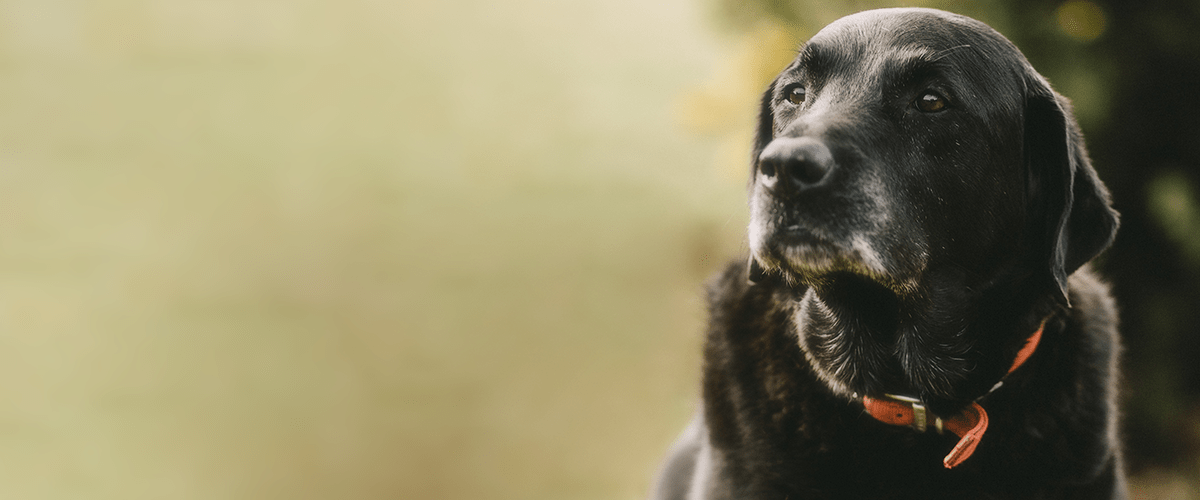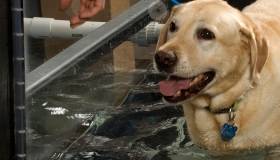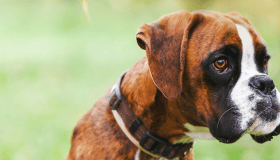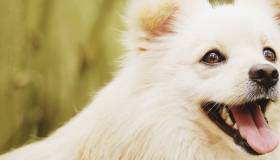
September 29, 2022 – A change in bark. Harsh breathing even in cool weather. Slipping on a hardwood floor. Trouble swallowing. Although it’s tempting to chalk these changes up to normal aging in dogs, it could signal a disease known as GOLPP – Geriatric Onset Laryngeal Paralysis and Polyneuropathy. This neurologic condition affects older dogs and in addition to impacting quality of life, GOLPP can be life-threatening.
Which Dogs Get GOLPP?
GOLPP typically affects older, medium- to large-breed dogs. The average age at the time of GOLPP diagnosis is 11 years of age, with a reported range of 8 to 13 years. The most common breeds affected include:
- Labrador retriever
- Newfoundland
- Borzoi
- Golden retriever
- Greyhound
- German shepherd
- Brittany spaniel
Occasionally, mixed-breed dogs can develop GOLPP too. No one knows why GOLPP occurs in some dogs and not others, but because certain breeds have a higher incidence than others, a genetic link is suspected.
The Most Common Signs
As the name implies, GOLPP is a disease of the nervous system. Laryngeal paralysis is a hallmark of the condition (and many dog owners are likely familiar with this condition or have heard about it from their veterinarian). Laryngeal paralysis has been recognized for decades, but it’s only been within the last few years that the term GOLPP has been coined to include not just laryngeal paralysis but a constellation of other, interrelated issues.
The most common signs of GOLPP include:
- Noisy breathing (most noticeable during panting)
- Bark or voice change
- Difficulty breathing, especially if excited, exercising, or in hot/humid weather
- Gagging and coughing
- Exercise intolerance or tiring easily
- Weak hind legs, unsteadiness, collapse
- Loss of muscle mass
- Pale or even blue-tinged gums
- Throat clearing
Making the Diagnosis
While clinical signs and physical exam findings can suggest GOLPP, definitive diagnosis can be a bit tricky, and often requires specialized testing including:
- Oral examination under light sedation (to assess laryngeal function)
- Neck and chest X-ray
- Muscle biopsy
- Swallowing exam (done in real time using a special type of X-ray machine called a fluoroscope)
- Nerve conduction studies
Treating GOLPP
Currently there is no cure for GOLPP but there are things owners can do to help.
- In dogs with confirmed laryngeal paralysis, a surgical procedure known as a “tie-back” can help open the airway. Your veterinarian can determine if your dog is a good candidate for this procedure.
- Keeping your dog cool can help with difficult breathing. Dogs with GOLPP don’t pant effectively to reduce body heat so are at a higher risk for heat stroke.
- Take extra precautions if your dog likes to swim. While swimming is great for muscular tone, dogs with GOLPP can be prone to aspirating water into their lungs (this is especially true for dogs that have had tie-back surgery). Life vests can be a big help if your dog loves to swim!
- Physical therapy has recently been shown to improve quality of life in dogs with GOLPP. Talk to your veterinarian about finding a local therapist for help.
- Raise food and water bowls to help with swallowing. Some experts recommend placing food and water dishes on stairs, so your dog’s front paws are 2-3 steps higher than their back legs.
Unfortunately, nerve degeneration will progress over time, but the condition is not painful. With care, dogs diagnosed with GOLPP can have an excellent quality of life.
To learn more about how we are improving health and well-being of pets as they get older, check out our Aging Pets White Paper.




